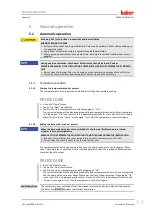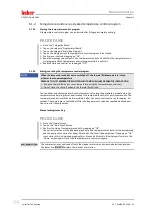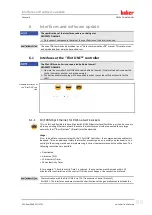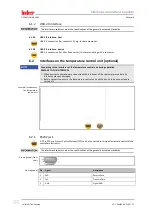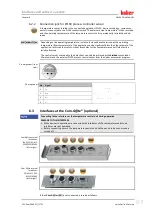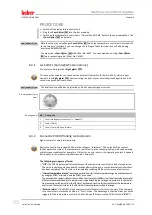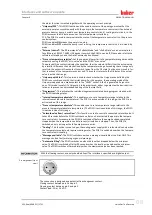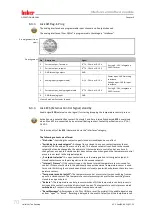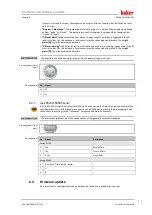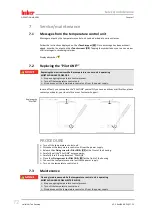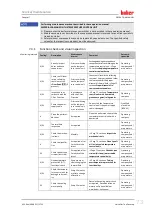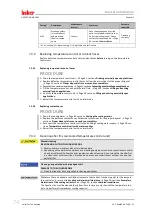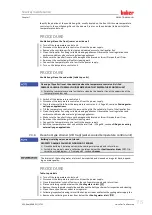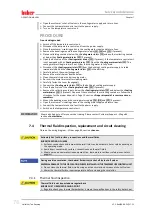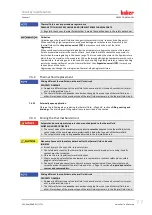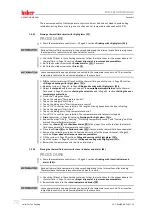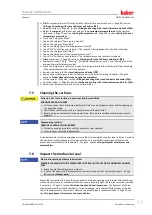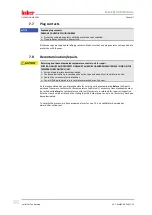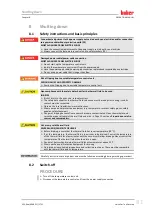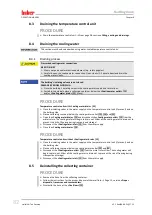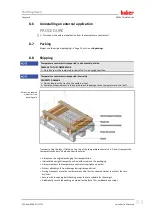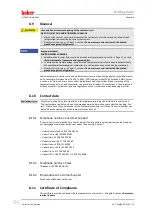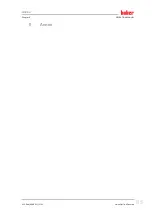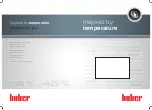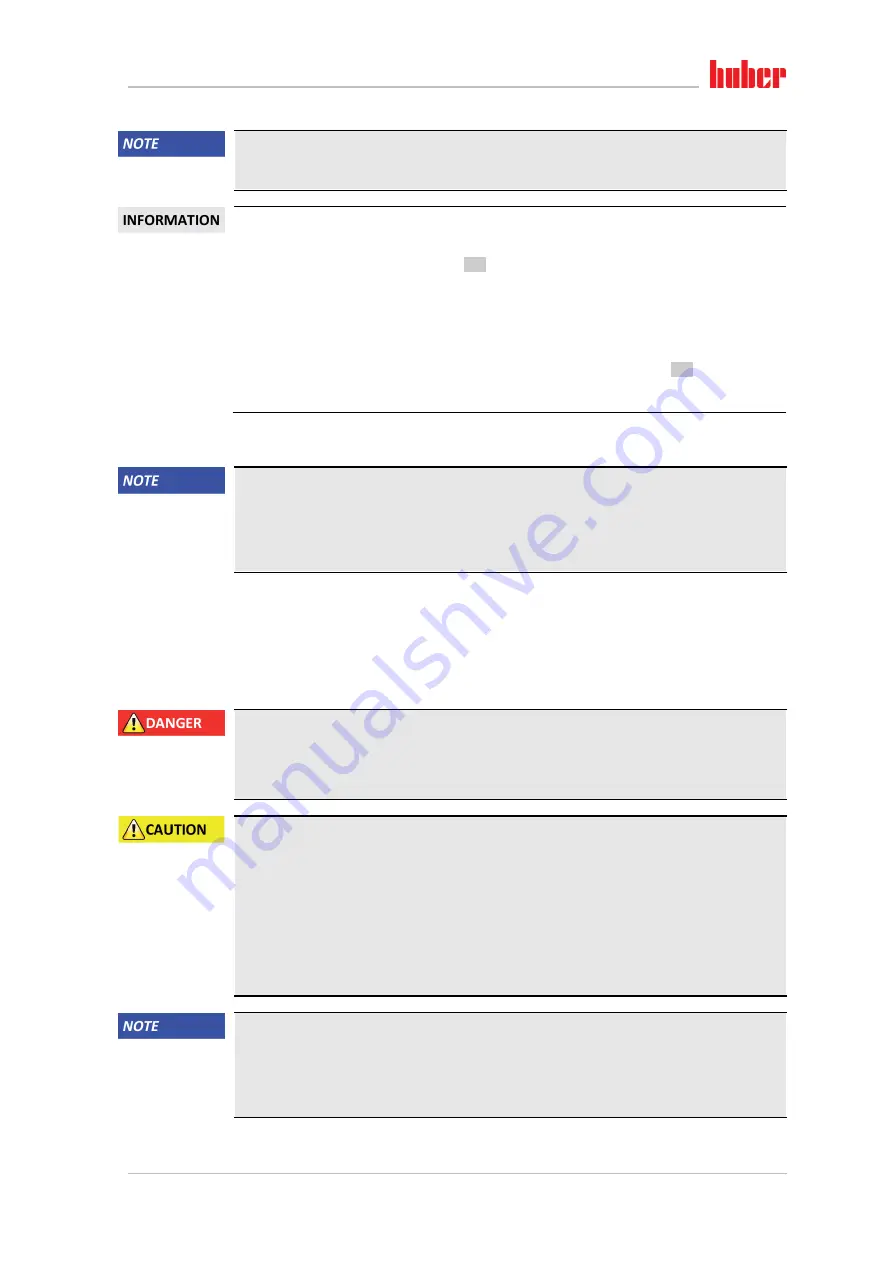
Service/maintenance
Chapter 7
OPERATION MANUAL
V2.2.0en/09.08.21//17.12
Unichiller® eo Desktop
77
Thermal fluid is not inspected on a regular basis
DAMAGE TO THE HEAT EXCHANGER AND/OR ELECTROMECHANICAL PARTS.
Regularly check your thermal fluid whether it meets the specifications in the safety data sheet.
Oxidation
Oxidation ages the thermal fluid and changes its characteristics (e.g. reduces its boiling point).
When controlling high temperatures, a reduced boiling point may cause overflow of very hot
thermal fluids at the
>Expansion vessel<
[18]. It may cause serious burns of the limbs.
Hygroscopy
When continuously thermoregulating below room temperature, hygroscopy causes the thermal
fluid to accumulate water in the course of time. Such a liquid mixture causes the evaporator to
burst when thermoregulating in the minus range. This is caused by the water in the liquid mixture,
which forms ice crystals on the evaporator. When thermoregulating high temperatures with such a
liquid mixture, the boiling point is reduced. When controlling high temperatures, a reduced boiling
point may cause overflow of very hot thermal fluids at the
>Expansion vessel<
[18]. It may cause
serious burns of the limbs.
Hygroscopy can change the mixing ratio of a water-ethylene-glycol mixture.
7.4.2
Thermal fluid replacement
Mixing different thermofluids in a thermal fluid circuit
PROPERTY DAMAGE
Do
not
mix different types of thermofluid (such as mineral oil, silicone oil, synthetic oil, water,
etc.) in a thermofluid circuit.
The thermal fluid circuit
must
be rinsed when changing from one type of thermal fluid to an-
other. No residues of the previous type of thermal fluid may remain in the thermal fluid circuit.
7.4.2.1
Externally open application
Observe the following when replacing the thermal fluid:
→
Page 58, section
. The draining and filling operations are described in this section.
7.4.3
Rinsing the thermal fluid circuit
Setpoint and overtemperature protection are not adjusted to the thermofluid
MORTAL DANGER FROM FIRE
The cut-out value of the overtemperature protection
must
be adapted to the thermofluid. Set the
cut-out value of the overtemperature protection 25 K below the fire point of the thermofluid.
The setpoint set during rinsing
must
be adjusted to the thermofluid used.
Non-compliance with the safety data sheet for the thermal fluid to be used
INJURIES
Risk of injury to the eyes, skin, respiratory tract.
The safety data sheet for the thermal fluid to be used must be read prior to using it and its
content must be respected.
Observe the local regulations/work instructions.
Wear your personal protective equipment (e.g. temperature-resistant safety gloves, safety
goggles, safety footwear).
Danger of slipping because floor and work area are contaminated. Clean the workplace; ob-
serve the proper disposal of thermal fluid and aids.
→
Mixing different thermofluids in a thermal fluid circuit
PROPERTY DAMAGE
Do
not
mix different types of thermofluid (such as mineral oil, silicone oil, synthetic oil, water,
etc.) in a thermofluid circuit.
The thermal fluid circuit
must
be rinsed when changing from one type of thermal fluid to an-
other. No residues of the previous type of thermal fluid may remain in the thermal fluid circuit.

